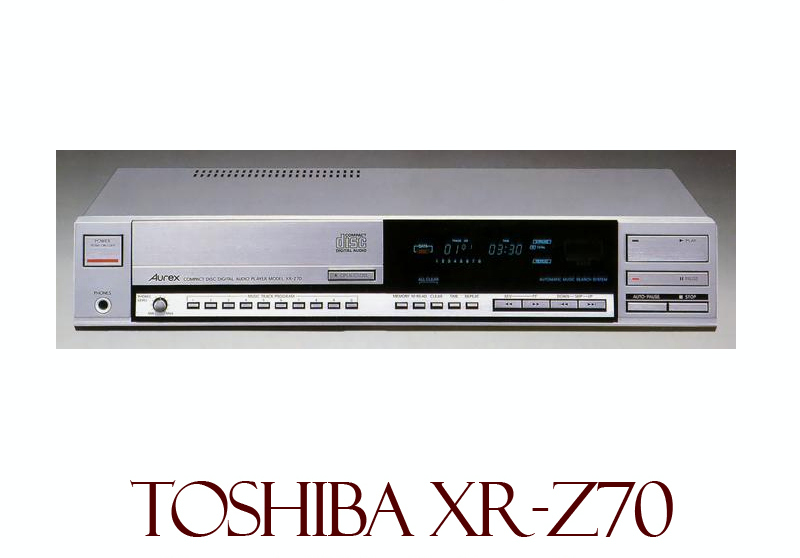Toshiba XR-Z 70
Data
General
- Manufacturer: Toshiba
- Model: XR-Z 70
- Type: CD-Player
- Years of manufacture: 1983 - 1985
- Made in: Japan
- Color: Silver, Black
- Original price approx.: 1'798 DM
Technical data
- Data at "Hifi-Engine": [1]
Comments
- Other models in the same series:
- Toshiba XR-Z 50
- Toshiba XR-Z 60
- Toshiba XR-Z 70
- Toshiba XR-Z 90
Pictures
- Image: Toshiba XR-Z 70
Reports
- Report at "Hifi-Museum":
- Toshiba XR-Z 70
- Toshiba has also switched from the portrait format to the drawer. The result is a dinky flattop with a classy silver flair. The most frequently used buttons "Play" and "Pause" are particularly large and contain an integrated illuminated feedback.
- 16 tracks have space in the program memory of the XR-Z70, subtitles can also be targeted or programmed. The number of tracks stored is indicated by the corresponding memory location numbers lighting up. The programme is retained for about a day even in the event of a power failure, and is automatically activated in timer mode. So you can compose your individual wake-up music in the evening for the next morning.
Two numerical displays provide information about the track currently playing, including the index number, and about the time that has elapsed since the track began. The time display can be switched to total time or remaining time.
Of course you can listen to the fast forward or rewind, even via a built-in headphone jack with level control. However, the fast forward could be a bit faster over the record. At least there's the title jump ("Skip") for the big steps. "Auto Pause" lets the laser remain in its position after the end of a track. "Repeat" offers endless playback of the record or the program.
- An infrared receiver for remote control is standard on the XR-Z70, and the encoder unit is also included. With oversampling the Toshiba player does not work, the amplitude frequency response runs however despite the steeply flanked filter desirably smoothly. The writing only shows a small level difference between the left and right channel. The noise at rest should have a little more safety margin to the smallest possible signal level. In practice, however, the mechanical running noise is usually more disturbing than the residual noise from the speaker. And in this discipline, the Toshiba player belongs to the quiet ones.
The low impedance outputs are also pleasing. In terms of noise immunity, the XR-Z70 can be seen and heard. Only strong errors in the information track let it "jump out of the groove", from surface damages it takes no notice up to 800 micrometers length. It passed our head-slide test without any dropouts, but it only had to pass during strong pendulum shocks.
- An all-round recommendable device for higher demands at an affordable price. U. W.
